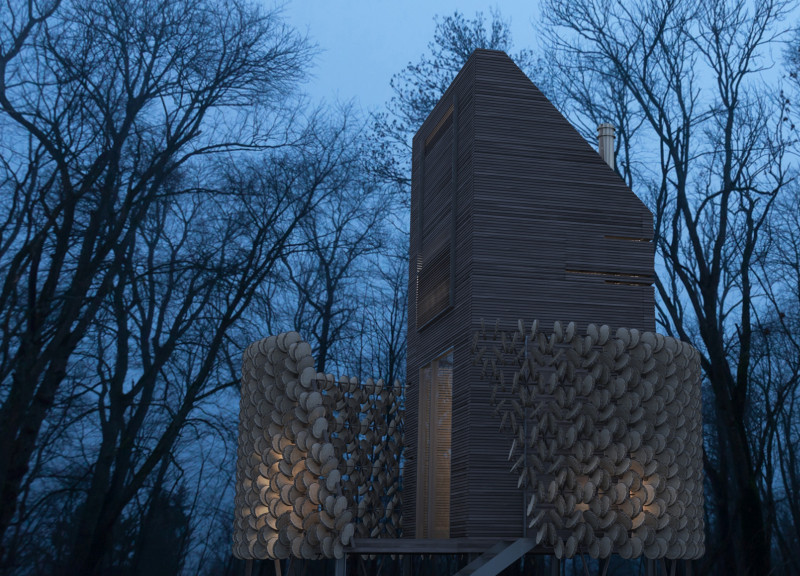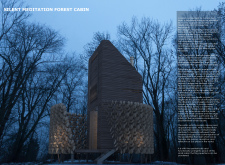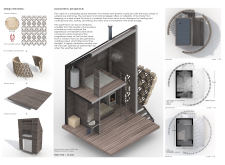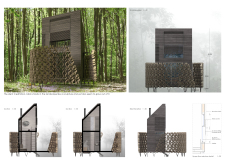5 key facts about this project
The cabin functions as a retreat for individuals seeking solitude and tranquility. With a total area of 15 square meters, it is designed to maximize utility in a compact footprint, incorporating essential living spaces within a harmonious layout. This includes a sleeping area, kitchenette, and an eco-friendly dry toilet. The spatial arrangement promotes flexibility, allowing for varied uses while maintaining comfort and functionality.
Distinctive Architectural Features
One of the standout features of the Silent Meditation Forest Cabin is its sculptural form that echoes organic shapes found in nature. The exterior is enveloped by a façade made of circular wood slices, reminiscent of leaves, adding both aesthetic appeal and functional benefits such as shading and privacy. This design choice creates an intimate atmosphere conducive to meditation while reinforcing the cabin’s connection to the forested landscape.
Significant design attention has also been given to the cabin's orientation. Large windows strategically placed provide expansive views of the surroundings, allowing natural light to permeate the interior and enhancing the occupant's connection to nature. The incorporation of photovoltaic solar panels on the roof further emphasizes the project's commitment to sustainability, enabling it to function as a net-zero energy building.
Sustainability and Resource Efficiency
The Silent Meditation Forest Cabin incorporates several sustainable features, addressing environmental concerns while promoting a minimal ecological footprint. Water management systems include rainwater harvesting, which utilizes collected rainwater for non-potable applications. The use of a dry compost toilet reflects a thoughtful approach to waste management, minimizing water consumption and environmental impact.
Natural ventilation has been prioritized throughout the design, allowing for adequate airflow without relying heavily on mechanical systems. This not only contributes to energy efficiency but also creates a healthier indoor environment. The careful selection of materials—primarily wood, glass, and steel—highlights the architecture's emphasis on sustainability while ensuring structural integrity and durability.
For a comprehensive understanding of the Silent Meditation Forest Cabin, including architectural plans, sections, and innovative design concepts, further exploration of the project presentation is encouraged. By delving into the architectural details, you can gain deeper insights into the project's unique approach to design and the interaction between architecture and nature.


























